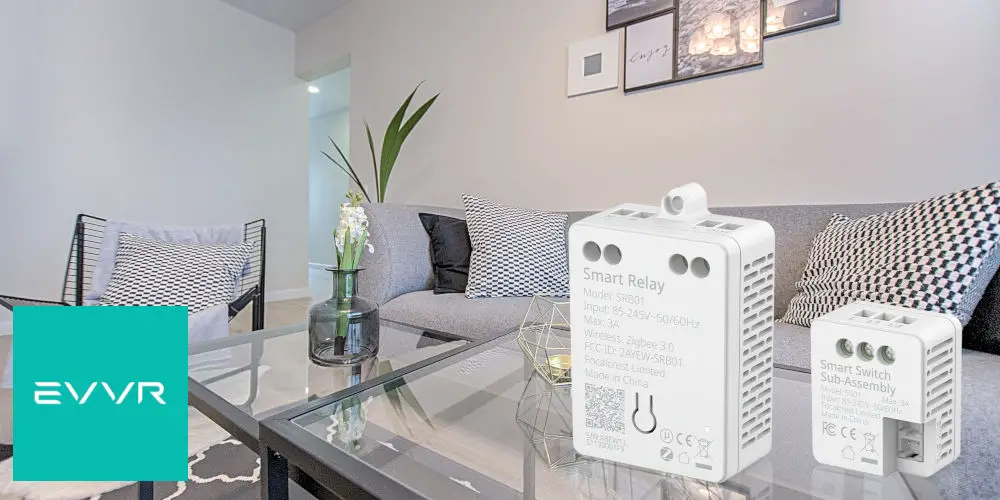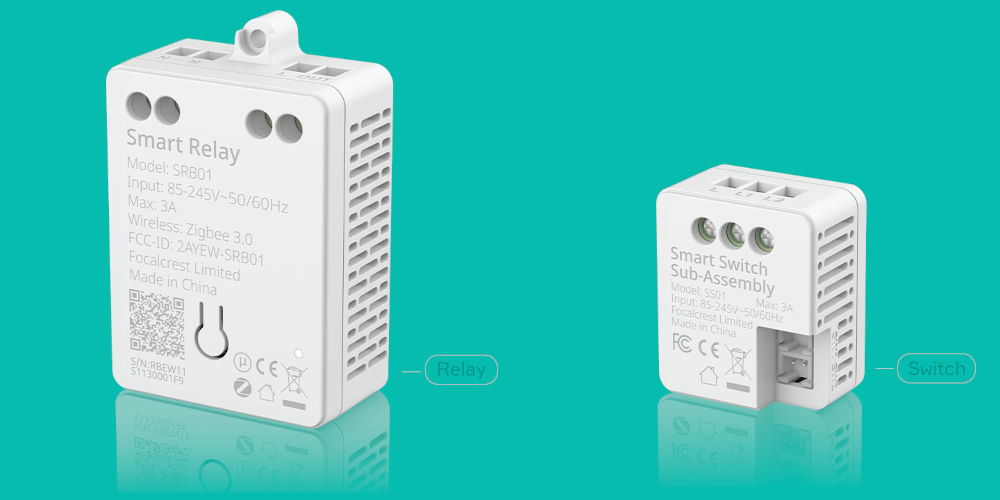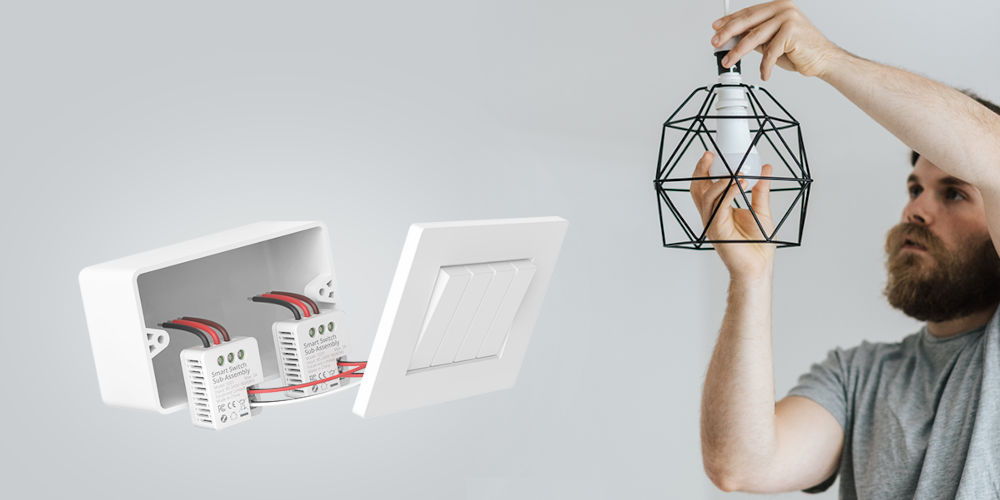Introducing the Evvr In-Wall Relay Switch

A few weeks ago the team at Evvr got in contact and offered to send us some free products. Fast forward a week and the Evvr In-Wall Relay Switch arrived. While they have given us a product to review for free, the following is our honest opinion.
With that disclaimer out the way, it’s worth discussing why the Evvr brand holds great promise. They offer some exciting devices with some even more innovative products on the way.
So while we aim to review the Evvr In-Wall Relay Switch for Z-Wave and Zigbee in this article, we’ll cover more than the basics.
Who’s Evvr?
Let’s start with the basics. Evvr is a Chinese startup with offices in Denmark and USA, that has an interesting approach to home automation. They’ve just released a range of smart switches for Z-Wave and HomeKit, which we’ll come to in a bit. But they also have some great designs that will be released soon.
They will shortly be releasing their own hub that combines Z-Wave, Zigbee and Bluetooth protocols. For their hub to work, they have built a new app that aims to simplify adding and controlling devices, while still offering a range of automation capabilities.
While all of this sounds exciting, we’ve saved the best to last. A device missing from the DIY smart home world is a purpose-built in-wall tablet. Of course, you can use any tablet with Fibaro or another system, but they aren’t designed exclusively for that purpose.
There’s little reason why in-wall control surfaces should only be available from the professional level home automation systems such as Control4 and Crestron, especially as they can make your smart home system even more flexible.
The Evvr Pad S changes the game. It’s just slightly larger than the average double light switch and has a 4-inch LCD screen and built-in speaker. You can connect to it using Wi-Fi, Zigbee, Bluetooth or an Ethernet cable. Plus, it doubles as a photo frame when not in use.
Hopefully, you can see why we’re excited about the Evvr brand and what they are bringing to the market.

Exploring the Evvr In-Wall Relay Switches
Evvr sells two In-Wall Relay Switches. There’s a Z-Wave/Zigbee version and an Apple Homekit version. They sent us the Z-Wave version as we’re using a Fibaro HC3 Lite.
What surprised us the most about the device is just how tiny is it. Many other Z-Wave devices that sit in a backbox are small, but EVVR has found a way to make their devices even smaller.
The Evvr switch consists of two parts and makes it painless to operate lights in your home. By splitting the device in two, you avoid having to always keep your light switch turned on to allow remote control, which is a problem with a few devices currently on the market.
These devices work with any bulb, you don’t need to upgrade to the latest LED bulbs. Sadly, they aren’t dimmable modules. So you’re limited to being able to switch the light on or off.
Installing the switch
We decided to install the Evvr In-Wall Relay Switch in our living room as that’s where the Hub and router live. So, with the lighting power switched off, we set about installing the device.
It took us some time to fully understand where the components go and what wires they need. We made the dumb mistake of trying to install the In-Wall Relay behind the light switch rather than in line with the light.
However, after realising this, we quickly added the relay switch in line with the light and hid it in the light ceiling rose. A piece of double-sided sticky tape come included, but we didn’t need it.
Next, we paired the device with our Fibaro system and used the Fibaro app to switch the light on and off. At this point, we could have simply called it a day and ignored using the existing light switch.
However, we quite like having the main living room light on a switch, especially when family visits as they might not have the Fibaro app on their phone. Luckily, Evvr has a solution.
The Evvr Smart Switch module has the capability to control two lights each on their own circuit, and so works with one or two Evvr In-Wall Relay Switches. Installing the Smart Switch device is easy as the wires are included, and it neatly fits into the backbox behind the light switch.
Thanks to the helpful and well-written instructions, getting both modules installed was quite simple, bar the human error at the start.

Control the Evvr using Fibaro
What makes pairing the Evvr devices with Z-Wave very easy, is the box also has the QR code on it. So you don’t need to awkwardly try and balance your phone and the device while trying to scan it. Of course, you can, but the packaging makes it super easy to add new devices.
As we now can control our living room light in two ways, either using the app or the existing light switch, it’s time to experiment. In the Fibaro app, we can add devices to rooms, scenes and automations. So there’s plenty of scope to control our light depending on our mood.
While we can’t dim our light using these devices, we still have flexible control over it. So, we added it to our night scene, allowing us to turn on multiple lights downstairs when it gets dark at night time.
Plus, as we can control Fibaro remotely if we’re out and it gets dark, it takes a second to turn on this light and make it look like we’re home. Great for a night out or when we’re on holiday.
Should you buy some Evvr devices?
We’re always a bit hesitant to recommend products from startups, as recent history is littered with many Kickstarter and other crowd-funded products that never quite make it to completion. That said, Evvr are developing some exciting products and aren’t crowd-funded.
Two other small concerns is availability and pricing. The Evvr In-Wall Relay Switch will retail for £40 for a pack of the two devices or £65 for a double switch kit (two relays and a switch). Compared to the current Fibaro and Aeotec devices, this is a little high.
However, we think the price will soften as more retailers come on board and their business scales up. We’re yet to see if they will offer a direct-to-consumer approach, but this might help bring prices down.
Overall, we like the Evvr In-Wall Relay Switch, it’s easy to install and programme. However, we’re concerned by the current pricing and availability. If Evvr sorts these issues, we’d be happy to recommend their devices. For the time being, proceed with caution and try to buy direct.




